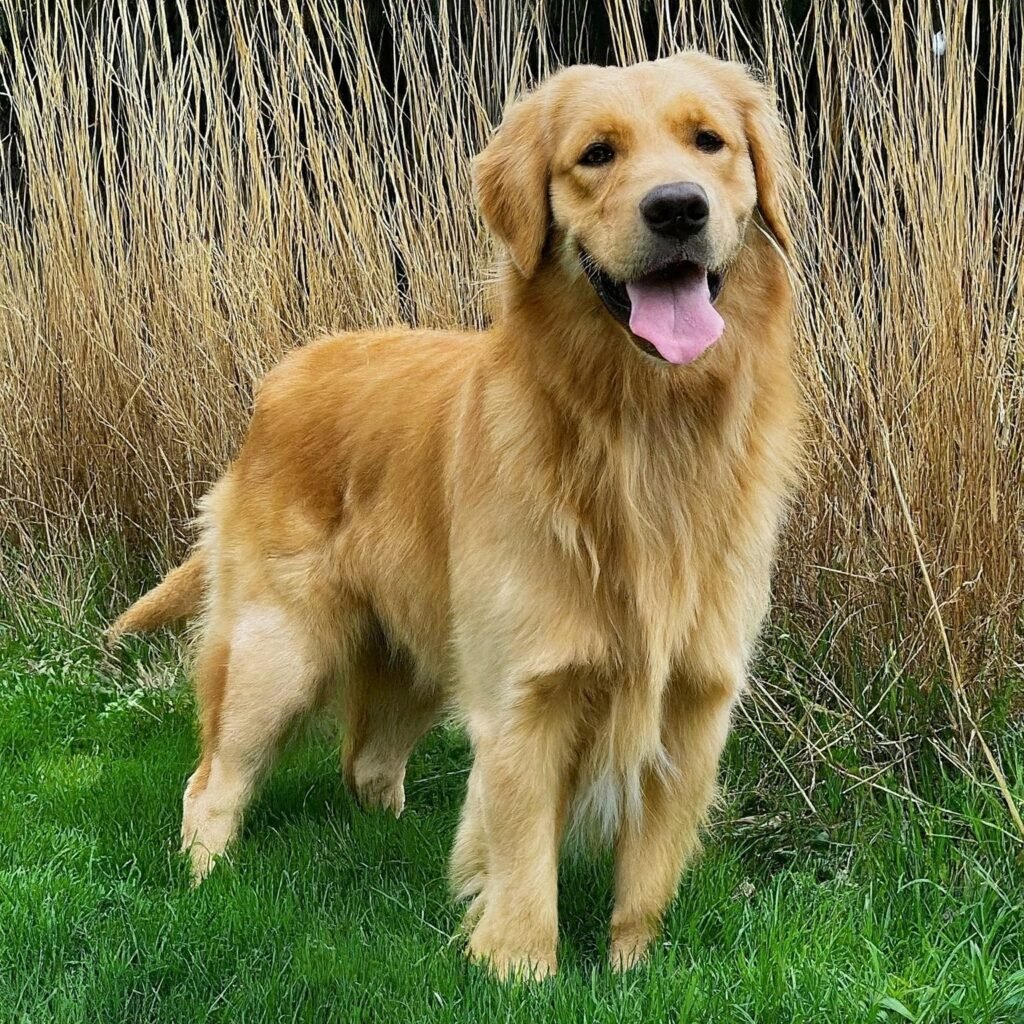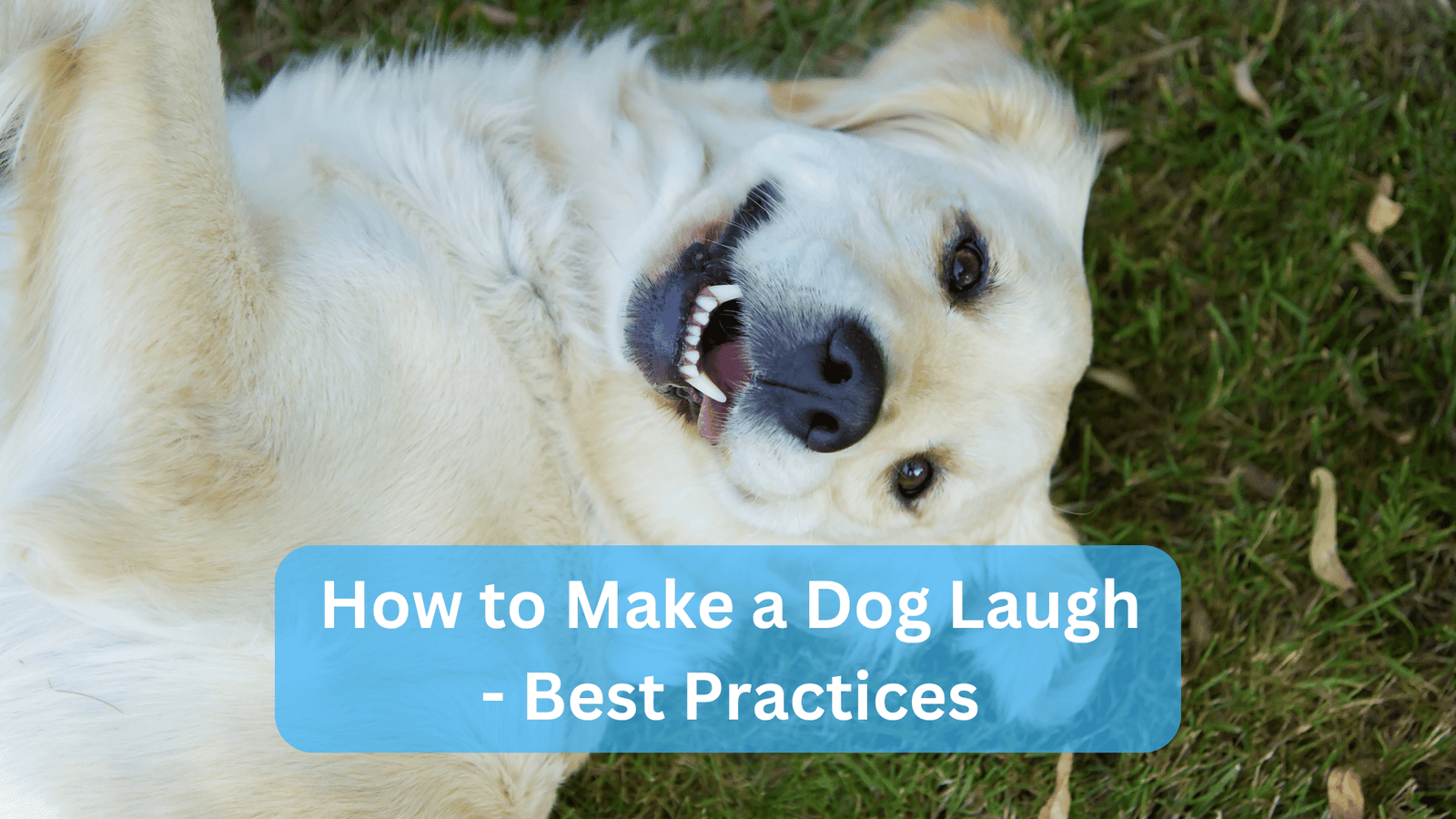Dogs are known for their loyal companionship and expressive behaviors. While the concept of dogs laughing may seem whimsical, understanding canine emotions and expressions can enrich your bond with your furry friend. This article explores the idea of dog laughter, How to make a dog laugh, techniques to encourage joyful behaviors, and the benefits of engaging playfully with your pet.
Understanding Canine Emotions and Expressions
Dogs, much like humans, experience a range of emotions. Joy, excitement, and affection are common feelings that dogs express through various behaviors.
While dogs don’t laugh in the same way humans do, they have their unique ways of showing happiness.
Common Expressions of Joy and Happiness in Dogs
- Wagging Tail: A wagging tail, especially when combined with a relaxed body posture, is a clear sign of a happy dog.
- Play Bow: When a dog lowers its front legs and raises its hindquarters, it’s a playful invitation.
- Smiling: Some dogs appear to smile, with their mouths open and tongues lolling out.
- Excited Barking: Short, high-pitched barks can indicate excitement and joy.
How Dogs Communicate Happiness

Understanding how dogs communicate happiness can help you recognize and enhance your pet’s joyful moments.
Dogs use a variety of body language and vocalizations to express their emotions.
Relaxed ears that are neither pinned back nor forward indicate a comfortable and happy dog.
Soft, blinking eyes and a wiggling body, often accompanied by a wagging tail, are clear signs of excitement and joy.
Additionally, happy barking, which is typically short and high-pitched, signifies that your dog is in a good mood.
Sometimes, dogs also whine or whimper out of excitement, especially when greeting their owners.
Recognizing these signs can help you better understand and respond to your dog’s emotional needs.
Can Dogs Really Laugh?
The question of whether dogs can laugh has intrigued pet owners and scientists alike. While dogs don’t laugh like humans, they exhibit behaviors that resemble laughter.
Scientific Perspective on Dog Laughter
Research suggests that dogs produce a unique sound known as “play-panting” during play. This sound, which is different from regular panting, is often associated with positive emotions and can be considered a form of laughter.
Signs of Laughter-like Behavior in Dogs
- Play-panting: A breathy, rhythmic pant that occurs during playtime.
- Relaxed and Open Mouth: Often seen during playful interactions, indicating contentment.
- Playful Behavior: Engaging in activities like chasing, wrestling, or tug-of-war.
How to Make a Dog Laugh?

Techniques to Make a Dog Laugh
Engaging your dog in playful activities and interactive sessions can evoke laughter-like behaviors and ensure they have a good time.
Playful Activities
- Fetch: A classic game that dogs love. Throwing a ball or a toy and having your dog retrieve it is a great way to stimulate joy.
- Tug-of-War: Using a sturdy rope or toy, gently tugging back and forth can be highly enjoyable for dogs.
- Hide and Seek: Hiding treats or toys and encouraging your dog to find them is both mentally stimulating and fun.
Interactive Toys
- Squeaky Toys: The sound of squeaky toys can excite dogs and prompt playful behavior.
- Puzzle Toys: These toys challenge dogs to think and solve problems, which can be very rewarding and fun.
Physical Interaction
- Belly Rubs: Most dogs enjoy a good belly rub, which can elicit happy, relaxed behavior.
- Tickle Spots: Finding and gently tickling your dog’s sensitive spots, like under the armpits or on the belly, can result in playful reactions.
Vocal Cues and Sounds
- High-pitched Tones: Dogs often respond positively to high-pitched, enthusiastic voices.
- Funny Noises: Making silly sounds or using playful voices can catch your dog’s attention and make them happy.
Training Your Dog to Respond to Play
Training your dog to engage in play can be beneficial for both physical and mental health.
Using positive reinforcement techniques, such as rewards in the form of treats, praise, and affection, can encourage your dog to participate in play.
Consistency is key; be consistent with commands and rewards to help your dog understand what is expected.
Establishing a regular playtime routine can build anticipation and excitement, making play a more enjoyable experience for both of you.
Remember to be patient and allow your dog to adjust to new games and toys at their own pace, ensuring a positive and stress-free environment.
Age-Specific Play Strategies
Different age groups of dogs have varying needs and play preferences, so it’s important to tailor your play activities accordingly.
Puppies require gentle play to avoid injuries and benefit from teething toys that soothe their gums and encourage healthy chewing habits.
Adult dogs often enjoy more active games like fetch and tug-of-war, and incorporating puzzle toys can provide much-needed mental stimulation.
Senior dogs, on the other hand, may prefer low-impact activities that are easy on their joints, such as gentle tugging or slow walks.
Soft toys that are easy to chew and carry are also ideal for older dogs. Adapting your play strategies to suit your dog’s age ensures that they remain engaged and happy.
Common Misconceptions About Dog Play
Clearing up misconceptions about dog play can help ensure safe and enjoyable play sessions. One common misunderstanding is confusing aggressive play with play fighting.
Understanding play signals, such as play bows, can help differentiate between the two.
Always supervise play sessions to prevent escalation and ensure that all interactions remain friendly.
Another misconception is the idea that play can lead to overstimulation. While play is important, balanced sessions with breaks are crucial to prevent overstimulation.
Incorporating calm activities like gentle petting or quiet time can help your dog relax after play, maintaining a healthy balance between excitement and calmness.
Choosing the Right Toys and Games
Selecting appropriate toys and games can significantly enhance the play experience for your dog.
Safety should be a top priority; ensure that toys are made from non-toxic materials and are the right size to prevent choking.
Durable toys that can withstand vigorous play are essential for active dogs, while soft toys are better suited for gentle chewers or older dogs.
Interactive toys, such as those that dispense treats or require problem-solving, can provide engaging play sessions with your dog.
Solo toys are also important for independent playtime, allowing your dog to entertain themselves safely when you are not available.
By choosing the right toys and games, you can create a stimulating and enjoyable environment for your pet.
Benefits of Making Your Dog Laugh
Engaging in playful activities and making your dog laugh can have several positive effects.
Strengthening the Bond
Spending quality time playing with your dog strengthens the emotional bond between you and your pet.
Mental Stimulation
Interactive play and engaging toys stimulate your dog’s mind, preventing boredom and promoting mental health.
Physical Exercise
Playful activities provide necessary physical exercise, helping to keep your dog fit and healthy.
Reducing Stress and Anxiety
Play can serve as a stress reliever for dogs, reducing anxiety and promoting overall well-being.
Safety Tips and Considerations
While it’s important to have fun with your dog, it’s equally important to ensure their safety and comfort.
Knowing Your Dog’s Limits
Pay attention to your dog’s behavior and body language to avoid overexertion or overstimulation.
Recognizing Signs of Discomfort or Stress
Signs like excessive panting, whining, or trying to escape the situation indicate that your dog may need a break.
Avoiding Overstimulation
Ensure play sessions are balanced and not too intense to prevent overwhelming your dog.
Also Read: How to make a Homemade Oatmeal Bath for Dogs: Best Guide
Also Read: Hydrogen Peroxide for Dogs’ Itchy Skin: A Comprehensive Guide
Conclusion
Understanding and encouraging laughter-like behavior in dogs can greatly enhance your relationship with your pet.
By engaging in playful activities, using interactive toys, and incorporating vocal cues, you can make your dog happier and healthier.
Remember to always consider your dog’s limits and comfort, ensuring a positive and enjoyable experience for both of you.
Sources:
International Journal of Comparative Psychology







